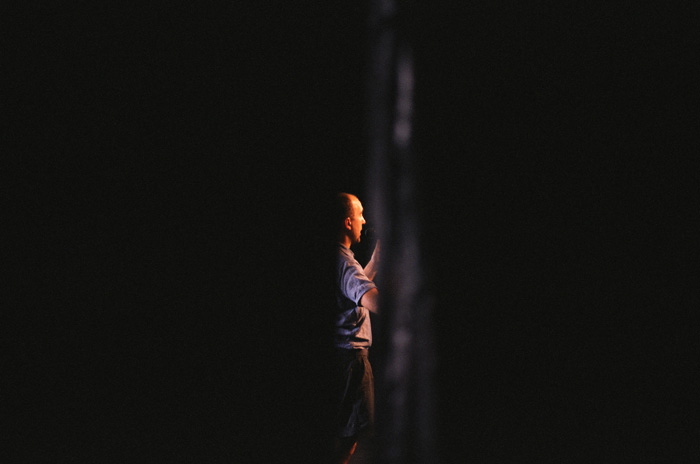Everybody agrees that “Hey Ya!” is the greatest song. Viscerally and emotionally powerful, its references to history and form leave no doubt as to Andre 3000’s intelligence and artistry. It isn’t often that a piece can create such unanimity of judgment. And, what exists at the other end of the spectrum? Can a work actively decide against romancing an audience and still induce a positive response? Can a work lead with intellectualism and still include the humanity associated with art?
Phil. 176/OBIT, an episodic performance installation showing this month at Brooklyn’s Bushwick Starr, is approaching these questions. To borrow an analogy from the event, whether we, the audience, enter a room which is holding these questions or we merely stand at the doorway looking in at them, we are nonetheless becoming familiar with their proposal. Shelly Kagan, a philosophy professor at Yale, is largely known for his course entitled “Phil. 176: Death,” which covers topics ranging from “free will and near-death experiences” to “the rationality of suicide.” This popular material has since been produced as a book and has also been captured and made available as an online video. Independently, performer Andrew Dinwiddie and director Daniel Fish have collaborated to present a precise recreation of these lectures, a verbatim sampling of Kagan’s semester syllabus.
Reframing concepts surrounding the greatest question of all, death (or is it life?), in a performance space and an artistic realm, implies the presence of an individual voice or a collective expression. It can be argued that this happens in all art, or at least durational art; a created mimic of a life cycle is presented for us to know through the scope of an artist’s perception. Within a series of moments, vast ideas become graspable, temporarily replacing our inability to know the entirety of our own lives and the lives of those around us.
Phil. 176/OBIT approaches this topic with a scholarly and mindful foot forward, taking lengths to obstruct identifiable characteristics. The work is put forward with the most minimal of aesthetics. An audience of silhouettes shifts through the empty black box, one with the least amount of light possible within a public space. Purely the resurrected sounds of the professor prominently holding the ideas to be learned and to be taken beyond are sensible. The voice, clinical and articulate, is peppered occasionally by a dry joke or a vocal crack. His dark form gesticulates in the postures of a lecturer, leaning and sitting cross-legged on a table.
Is one then left to simply experience and intake the information, same as the students at Yale University? And, can we assume that the conditions in that lecture hall were similar to this deprived theater space? Thoughts and observations compound. Phil. 176/OBIT is logically consistent, with the option to continue deciphering the messes of one’s own mental and bodily distractions while aiming to move towards a gain or curious finality. It provides the option of doing so within a construction designed for collecting with social creatures outside of oneself.
by Anna Marie Shogren
























